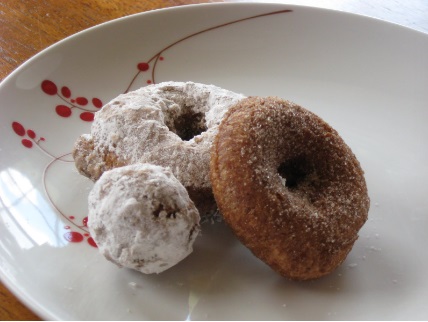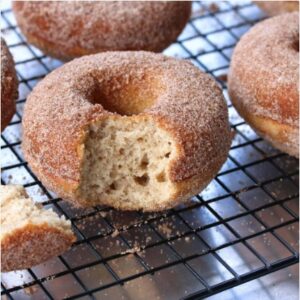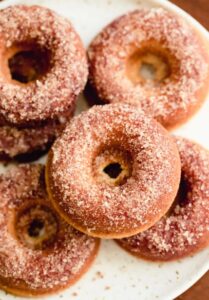Introduction to Gluten-Free Donuts
Understanding Gluten-Free Diets
Gluten-free diets have surged in popularity, driven by the growing awareness of gluten-related health issues like celiac disease and gluten intolerance. This dietary shift has sparked a significant demand for gluten-free alternatives to traditional foods. Among these, gluten-free donuts stand out as a particularly sought-after treat. They offer a delightful option for those who must avoid gluten but still crave the indulgence of a sweet, doughy snack.
Why Gluten-Free?
Health Reasons: Celiac Disease and Gluten Intolerance
Choosing a gluten-free lifestyle often stems from health necessities like celiac disease and gluten intolerance. Celiac disease, an autoimmune disorder, forces individuals to avoid gluten as it triggers harmful reactions in their bodies. Similarly, those with gluten intolerance experience discomfort and adverse health effects upon consuming gluten-containing foods. For these individuals, gluten-free options are not just a preference but a crucial aspect of their daily diet, visit the Celiac Disease Foundation.
Beyond these health concerns, many people opt for gluten-free diets as a lifestyle choice. They perceive gluten-free foods as healthier alternatives, often associating them with improved digestive health and overall well-being. This shift towards gluten-free eating is not just about addressing medical needs but also about embracing a lifestyle that prioritizes health and wellness. As a result, gluten-free products like donuts have gained popularity, catering to both health requirements and the growing trend of mindful eating, Food Allergy Research & Education offers valuable information.
Ingredients in Gluten-Free Donuts
The key to delicious gluten-free donuts lies in the choice of ingredients. Here are some common components:
- Gluten-Free Flours: Crafting delicious gluten-free donuts begins with selecting the right ingredients. Common gluten-free flours like rice, almond, and coconut form the base of these treats. Each flour brings its unique texture and flavor, allowing for a variety of taste profiles. Rice flour often imparts a light, delicate texture, while almond flour adds a nutty richness. Coconut flour, known for its absorbency, contributes to a denser, heartier bite.
- Binders and Moisturizers: Binders and moisturizers play a crucial role in achieving the perfect donut consistency. Xanthan gum, a popular gluten-free binder, helps replicate the elasticity and stickiness that gluten typically provides. Eggs, a staple in traditional baking, also serve as a binder and add moisture, ensuring the donuts don’t turn out too dry. Applesauce acts as a dual-purpose ingredient, providing moisture while also serving as a healthier alternative to fats.
- Sweeteners and Flavorings: Sweeteners and flavorings are essential in transforming the basic dough into a delightful treat. Natural sweeteners like honey, maple syrup, or agave nectar offer sweetness without the need for refined sugars. These ingredients not only sweeten the donuts but can also contribute subtle flavor nuances. Additionally, a variety of flavorings – from vanilla extract to citrus zest – infuse the donuts with depth and complexity. These ingredients work in harmony, creating gluten-free donuts that are not only safe for those with dietary restrictions but also a delicious choice for any donut enthusiast.
Making Gluten-Free Donuts at Home
Baking gluten-free donuts at home requires a blend of creativity and precision. Here are some essential tips and a basic guide to help you master the art of gluten-free donut making.
Essential Tips for Baking Gluten-Free
- Choose the Right Flour Blend: Selecting the appropriate gluten-free flour is crucial. A mix of rice, almond, and coconut flours often yields the best results. Each flour contributes unique qualities, so experimenting to find your perfect blend is key.
- Be Precise with Measurements: Gluten-free baking demands accuracy. Use a digital scale for flour measurements to ensure consistency in your dough.
- Incorporate Binders: Gluten-free dough lacks the elasticity of traditional dough. Adding binders like xanthan gum or eggs helps achieve the right texture.
- Avoid Overmixing: Overmixing can lead to dense donuts. Mix just until the ingredients are combined to keep the dough light and airy.
Step-by-Step Guide to a Basic Gluten-Free Donut Recipe
- Mix Dry Ingredients: Combine your gluten-free flour blend, a pinch of salt, and baking powder in a bowl.
- Blend Wet Ingredients: In a separate bowl, whisk together eggs, your choice of sweetener, melted butter or oil, and a splash of vanilla extract.
- Combine Wet and Dry: Gradually add the wet mixture to the dry ingredients, stirring until just combined.
- Shape the Donuts: Transfer the dough to a piping bag and pipe it into a greased donut pan, or roll it out and cut donut shapes if frying.
- Bake or Fry: For baked donuts, bake in a preheated oven at 350°F (175°C) for about 12-15 minutes. For fried donuts, heat oil in a deep fryer or large pot to 375°F (190°C) and fry until golden brown.
- Cool and Decorate: Let the donuts cool before applying glazes or toppings.
Variations: Baked vs. Fried
- Baked Donuts: Offer a lighter, softer texture. They’re easier to make and a healthier option as they require less oil.
- Fried Donuts: Have a crispy exterior and a fluffy interior, mimicking the classic donut texture. They require more attention, especially in maintaining the oil temperature.
Whether baked or fried, homemade gluten-free donuts can be a delightful treat, offering the joy of baking along with the satisfaction of creating something both delicious and inclusive.check out our article on Gluten-Free Pumpkin Muffins.
Creative Gluten-Free Donut Recipes
Decorating and Serving Gluten-Free Donuts
The final touch to your gluten-free donuts is in the decoration and presentation:
- Glazes, Toppings, and Fillings: Decorating and serving gluten-free donuts transforms them from simple baked goods into delightful treats. Start by choosing from a variety of glazes, like classic chocolate, vanilla, or a zesty lemon. For a more adventurous twist, try glazes infused with lavender or matcha. Toppings add texture and visual appeal; think sprinkles, crushed nuts, or even edible flowers for a touch of elegance.
- Presentation and Pairing Ideas: Fillings can elevate your donuts to the next level. Inject them with jam, custard, or a dairy-free cream to surprise and delight with every bite. When it comes to presentation, arrange your donuts on a stylish platter or stack them for a tempting display. Pair them with complementary beverages – freshly brewed coffee, herbal tea, or even a glass of almond milk. Serving gluten-free donuts not only satisfies the taste buds but also turns a simple snack into a memorable culinary experience.
Store-Bought Gluten-Free Donuts
While homemade donuts are delightful, store-bought options are convenient:
- Brands and Availability:The market for store-bought gluten-free donuts is expanding rapidly, offering a convenient option for those who prefer ready-made treats. Brands like Katz, Kinnikinnick, and Freedom Gluten Free are leading the charge, providing a variety of flavors and styles. These products are increasingly available in supermarkets, health food stores, and online, making them accessible to a wide audience.
- Homemade vs. Store-Bought: When comparing homemade versus store-bought gluten-free donuts, consider factors like taste, texture, and ingredient control. Homemade donuts allow for customization and the assurance of using fresh, wholesome ingredients. They also offer the joy and satisfaction of baking from scratch. On the other hand, store-bought donuts provide convenience and consistency, ideal for those with time constraints or less confidence in their baking skills. Both options have their merits, and the choice often boils down to personal preference and lifestyle needs.
FAQs on Gluten-Free Donuts
Addressing some common queries about gluten-free donuts:
1. How much gluten is in a standard donut?
- Standard donuts typically contain a significant amount of gluten, as they are made with wheat flour, which is high in gluten.
2. Does Krispy Kreme offer gluten-free options?
- As of now, Krispy Kreme does not provide gluten-free donuts, so those with gluten sensitivities should look elsewhere.
3. What are some reputable brands selling gluten-free donuts?
- Brands like Katz, Kinnikinnick, and Freedom Gluten Free are well-known for their delicious range of gluten-free donuts.
4. Can I make gluten-free donuts without a donut pan?
- Absolutely! You can shape the dough by hand or use a muffin tin as an alternative.
5. Are gluten-free donuts healthier than regular donuts?
- Gluten-free donuts can be healthier, especially if made with nutrient-rich flours and natural sweeteners, but it ultimately depends on the other ingredients used.
6. How long do homemade gluten-free donuts last?
- They are best enjoyed fresh but can last up to 2 days in an airtight container.
7. Can I freeze gluten-free donuts?
- Yes, you can freeze them for longer storage. Just thaw and perhaps reheat before serving.
8. Are there vegan gluten-free donut options?
- Many recipes and some store-bought options are available for those seeking vegan and gluten-free donuts.
Health and Nutritional Considerations
It’s important to balance indulgence with health:
- Caloric Content and Nutritional Value: Be mindful of the nutritional aspects of gluten-free donuts.
- Balancing Diet and Indulgence: Enjoy your treats while maintaining a healthy diet. For more on balancing diet and indulgence, visit the American Diabetes Association.
Conclusion
Gluten-free donuts offer a delightful alternative for those on a gluten-free diet or seeking healthier options. Whether you bake them at home or opt for store-bought varieties, these treats can be a delicious part of your diet, satisfying your sweet tooth while adhering to dietary restrictions.



